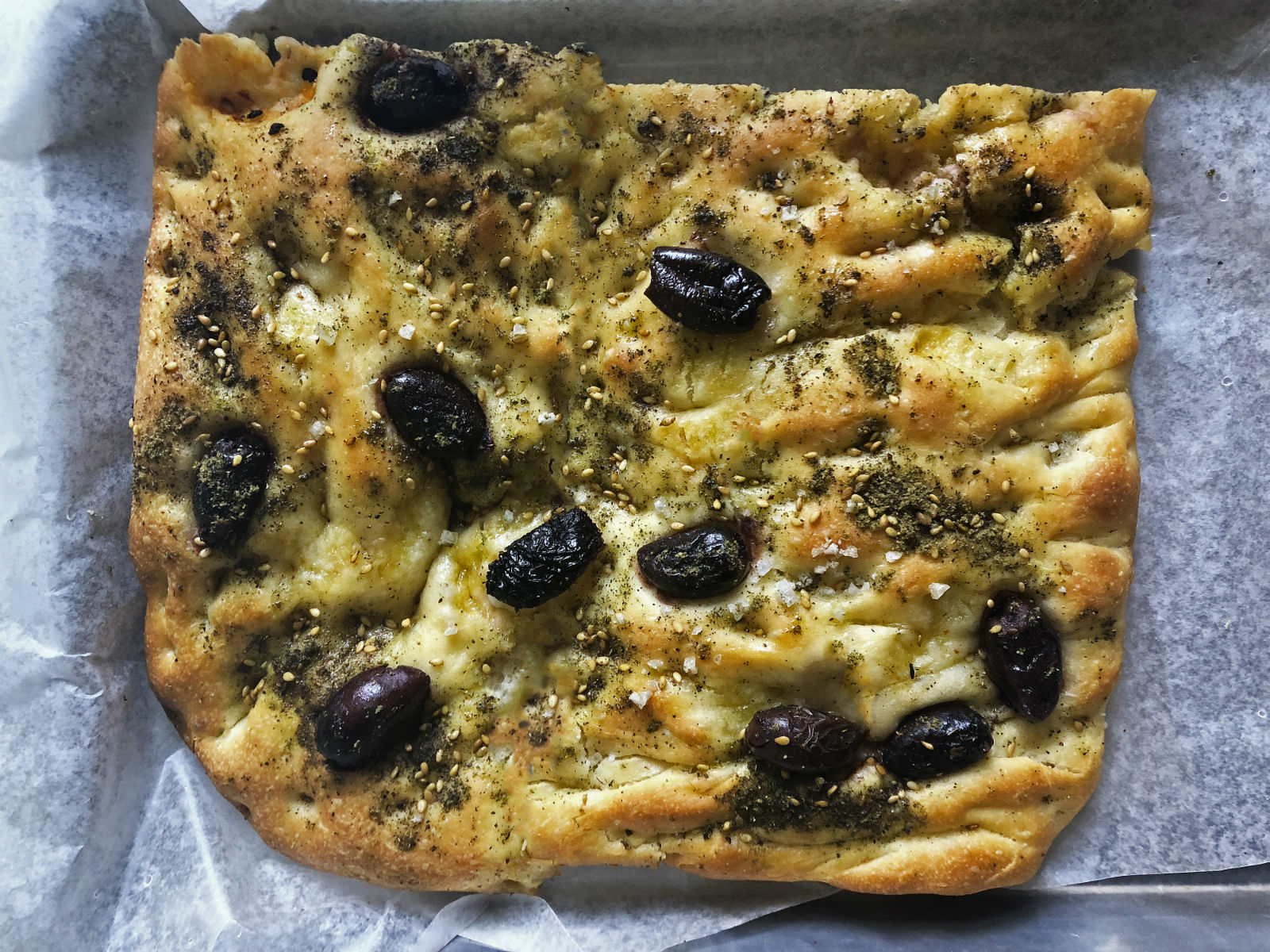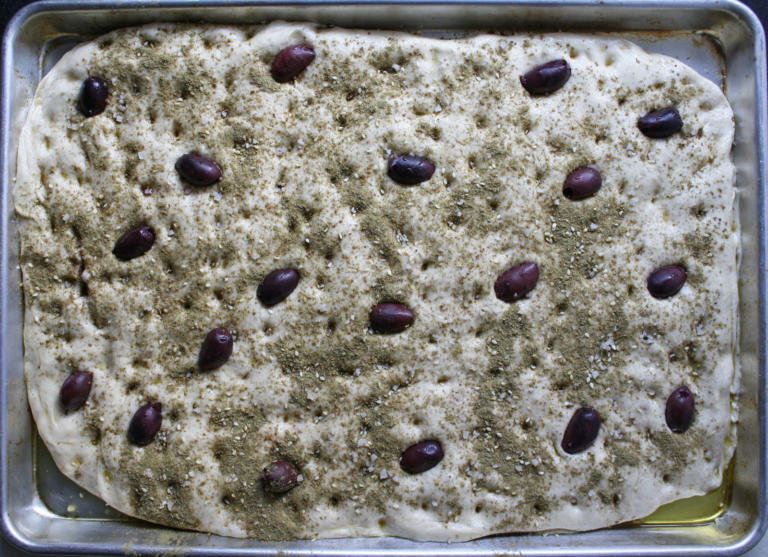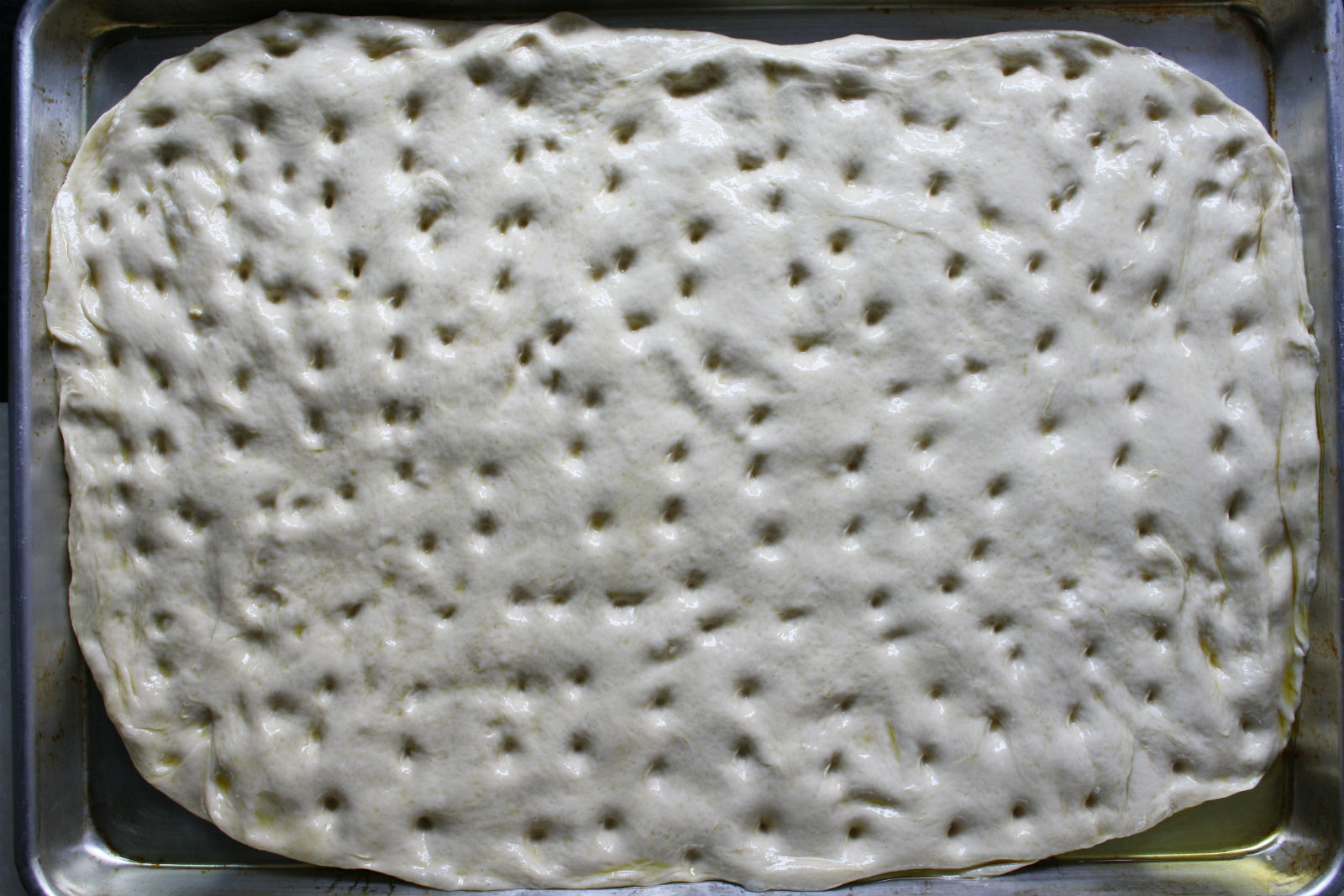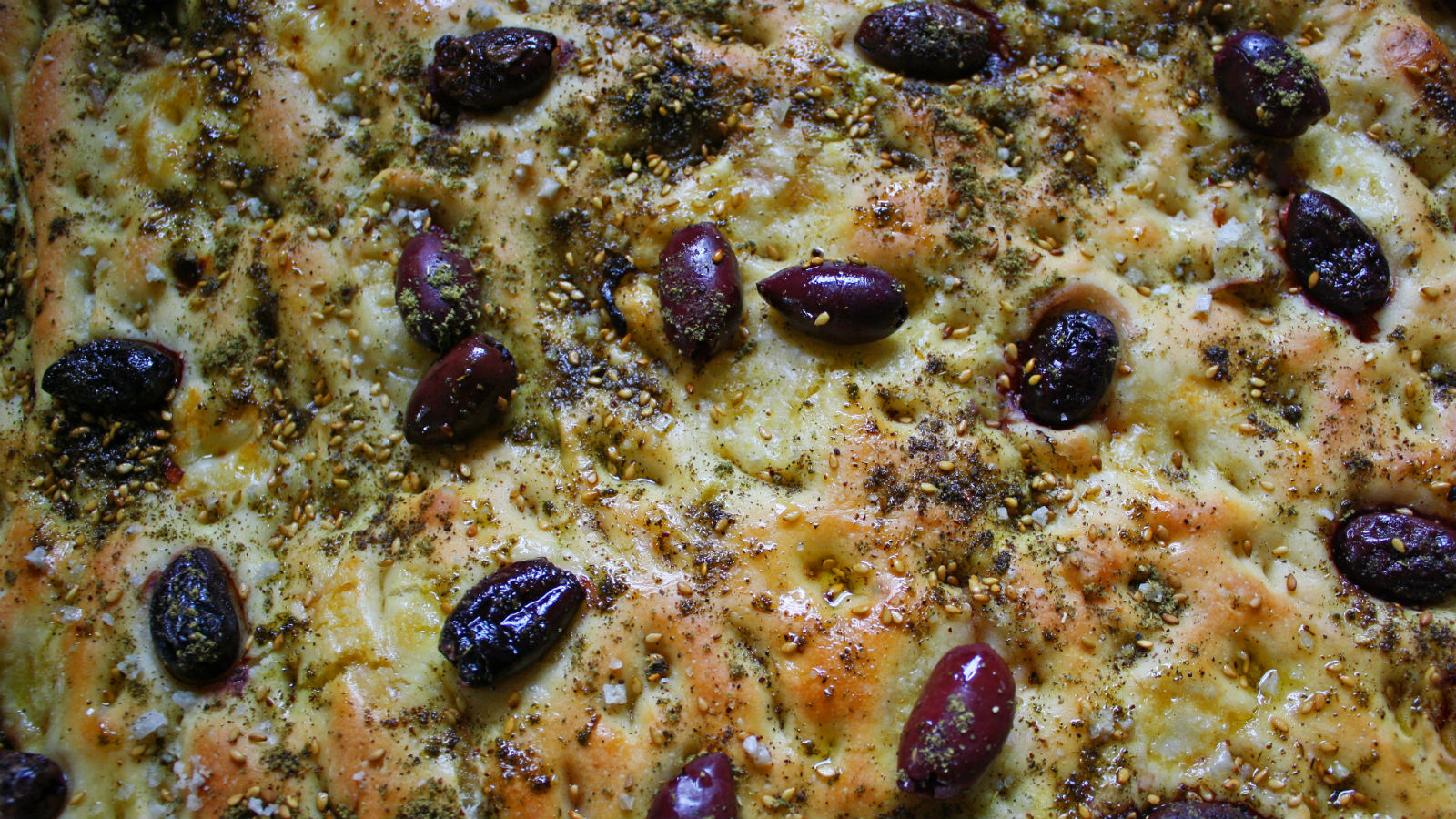Focaccia is made with a very soft dough, slightly rich from generous amounts of added oil that helps it become crisp-edged as it bakes. As I was working on this recipe, Netflix’s “Salt Fat Acid Heat” premiered, and suddenly making focaccia felt particularly timely.
In Samin Nostrat’s excellent, highly acclaimed series about the fundamental elements of making good food, she invites the viewer to learn how to make Ligurian focaccia. In Liguria, Italy, they add the unique step of topping the focaccia with a salt brine before baking the dough. I was captivated by the simplicity and beauty of the focaccia making process, and have rewatched that part of the “FAT” episode countless times.

While the focaccia recipe here differs from its Ligurian counterpart, the essential components are the same, and the lessons learned from Nostrat are helpfully applicable. Primarily, one is reminded that when a recipe has so few ingredients, each ingredient should be of good quality.
Focaccia requires extra-virgin olive oil, and that olive oil should be good, fresh and have a robust flavor. Choosing the olive oil can be a matter of preference. I’m partial to California olive oils with their smooth butteriness; high quality affordable varieties can be found in most grocery stores. You could also splurge on an Italian olive oil from a specialty market. The olive oil will help your focaccia get a crisp crust, and it will perfume the dough with its flavor.
The Nosher celebrates the traditions and recipes that have brought Jews together for centuries. Donate today to keep The Nosher's stories and recipes accessible to all.
I like using kalamata olives in this recipe for their fruity wine-like flavor, but you could certainly use your favorite olive variety. The olives serve to accentuate the flavors in the oil, and the dough also gets topped with za’atar to bring a welcome herby earthyness to this rich bread. Just before putting it in the oven, I top the focaccia with flake salt for crunch and savoriness. After oil, salt is focaccia’s best friend.
I love to serve this olive and za’atar bread with an Israeli-style spread: fresh salads, good feta, hummus and baba ganoush. Leftover focaccia is always a gift, and it can be turned into delicious croutons, stored in the freezer for future snacking, or it can even become the base of an unexpected Middle Eastern-inspired stuffing. Thanksgiving is around the corner, after all. Soon after Thanksgiving is Hanukkah, which provides another opportunity for this oil-centric recipe.
Notes:
- The dough needs to chill in the refrigerator for at least 12 hours, or up to 48 hours. It then needs to rise for 2-4 hours on the baking sheet before baking.
- The cooked focaccia freezes well.

Za’atar and Olive Focaccia
A Middle Eastern take on this fluffy, rich Italian bread.
- Total Time: 14 hours 45 minutes
- Yield: Serves 6-8
Ingredients
- 2¼ cups warm water, 105-110°F
- 2¼ tsp (1 packet) active dry yeast
- 1 tsp sugar
- 5 cups (650 g) bread flour
- 1 Tbsp kosher salt, Diamond brand (less if using Morton)
- 6 Tbsp extra-virgin olive oil, divided, plus more as needed
- ½ cup pitted kalamata olives
- 1 Tbsp za’atar, or to taste
- flake salt, to taste
- fresh rosemary or oregano (optional)
Instructions
- Dissolve the yeast with sugar in the warm water, and allow it to sit for 5-10 minutes, or until the mixture looks foamy and bubbly.
- To a stand mixer fitted with a dough hook, add the yeast and water mixture, 2 Tbsp olive oil, salt and flour.
- Turn the mixer to stir, and allow it to mix until a shaggy dough is just formed.
- Increase the speed to medium and knead for 5-6 minutes, or until a smooth, soft and elastic dough forms. This is a sticky dough, but you should be very smooth and easy to handle; if it still feels too wet or sticky as your mixing it, add a little more flour 1 Tbsp at a time.
- Remove the dough from the mixer, form into a ball, and transfer to a large well-oiled bowl with a lid, or large sealable container, like a Cambro.
- Turn the dough in the container, so that both sides are lightly covered in the oil. Place a tight fitting lid on the container, or cover tightly with plastic wrap and place a plate or a tray over the top. Refrigerate the dough overnight, or for at least 12 hours, or up to 48 hours.

- After the dough has proofed slowly in the fridge, it should be more than double in size. Remove it from the fridge and punch it down, removing all the excess air. Pool each edge of the dough towards the center to form a ball, and continue to deflate the dough.
- Prepare the baking dish. Add 3 Tbsp oil to a 9×13 metal baking dish, or to a rimmed baking sheet; for a thicker fluffier dough use the 9×13 dish, and for a thinner crispy focaccia use a rimmed baking sheet. Transfer the dough to the oiled baking dish and lightly press and stretch it into a rectangular shape. It is ok if it does not fill the pan because as it rises, it will spread and fill to the edges of the baking dish.
- Use your hands to add extra oil from the edges of the pan to the top of the dough, so that both the bottom and top of the dough are lightly covered in oil. Cover with plastic wrap, and let the dough rise for 2-4 hours, or until it has raised, puffed up, and filled the baking dish.
- Preheat the oven to 425°F. Add a little oil to your hands, and then firmly press your finger tips into the dough, creating dimples. Press deeply into the dough, lifting with each press, almost like you’re playing piano across the length of the baking dish. Top with the olives, placing them firmly into the dough. Sprinkle with za’atar, an additional drizzle of oil and flake salt. Top with fresh rosemary or oregano sprigs if desired.
- Bake for 25-30 minutes on the center rack until golden brown on top. Transfer to a baking rack and allow it to cool for 20-30 minutes. Serve warm or at room temperature.
Notes
- The dough needs to chill in the refrigerator for at least 12 hours, or up to 48 hours. It then needs to rise for 2-4 hours on the baking sheet before baking.
- The cooked focaccia freezes well.
- Prep Time: 15 minutes + 14 hours chilling/rising
- Cook Time: 30 minutes
- Category: Appetizer
- Method: Baking
- Cuisine: Vegetarian




Leave a Comment